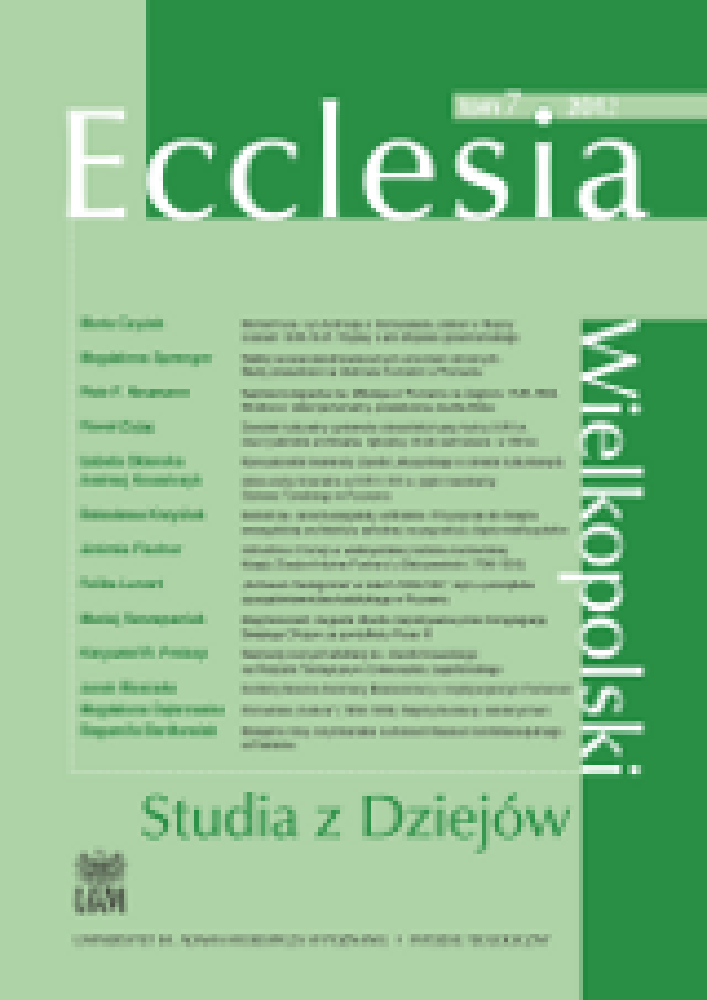Abstrakt
Bowls as artistic metal vessels were already known in antiquity. But only in the Middle Ages the art of Islam gave them an independent artistic expression. In European art we can distinguish two groups of richly decorated metal bowls. Indication of Nuremberg as the centre of producing such bowls follows from the position of the city in those times - a European centre of artistic han- dicraft. The brass bowls from Nuremberg reached wherever the merchant trading in them could get on foot or horseback. They served as interior decorations and rich burghers used them for practical purposes. But they were also sometimes used for collecting alms. They started to be used for sacral purposes, mostly as baptismal bowls, as late as the 17th century. Among an abundance of motifs and decorative representations three dominated both in terms of frequency and length of time when they were in use. Those were: „The Original Sin", „The Annunciation" and a whirling rosette. Since 1500 inscriptions became an indispensable element of the bottom and its decoration. The year 1543 marks the beginning of a decline in the production of brass dishes. In 1550 the production of matrices stopped and in 1618 the craft of brass bowl coppersmith became extinct.Bibliografia
Kronthal A., Ein unbekanntes Posener Museum, „Aus dem Posener Lande” 6 (1911), Heft 1.
Kuczyńska J., Mosiężne misy niemieckie między gotykiem a renesansem, Lublin 2000.
Licencja
Autorzy
Autorzy tekstów przyjętych do publikacji w czasopiśmie Ecclesia. Studia z Dziejów Wielkopolski są zobowiązani do wypełnienia, podpisania i odesłania na adres redakcji umowy o udzielenie nieodpłatnej licencji do utworów, z zobowiązaniem do udzielania sublicencji CC.
Zgodnie z umową, autorzy tekstów opublikowanych w czasopiśmie Ecclesia. Studia z Dziejów Wielkopolski udzielają Uniwersytetowi im. Adama Mickiewicza w Poznaniu niewyłącznej i nieodpłatnej licencji oraz zezwalą na użycie sublicencji Creative Commons Attribution-NoDerivatives 4.0 International (CC BY-ND 4.0).
Autorzy zachowują prawa do dalszego, swobodnego rozporządzania utworem.
Użytkownicy
Zainteresowani użytkownicy internetu uprawnieni są do korzystania z utworów opublikowanych od 2015 roku w Ecclesia. Studia z Dziejów Wielkopolski pod następującymi warunkami:
- uznanie autorstwa - obowiązek podania wraz z rozpowszechnionym utworem, informacji, o autorstwie, tytule, źródle (odnośniki do oryginalnego utworu, DOI) oraz samej licencji;
- bez tworzenia utworów zależnych - utwór musi być zachowany w oryginalnej postaci, nie można bez zgody twórcy rozpowszechniać np. tłumaczeń, opracowań.
Do wszystkich tekstów opublikowanych przed 2015 r. prawa autorskie są zastrzeżone.
Inne
Uniwersytet im. Adama Mickiewicza w Poznaniu zachowuje prawo do czasopisma jako całości (układ, forma graficzna, tytuł, projekt okładki, logo itp.).
